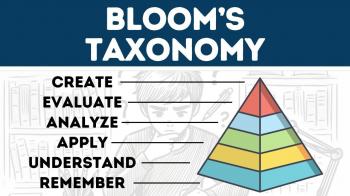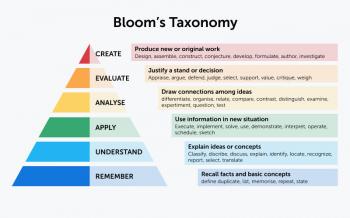The Think-Pair-Share Strategy in Active Learning, Pros, Cons, and All You Need to Know

In this fast and changing world, the need for interactive learning is getting bigger by the day. New methods of teaching are surfacing, but what is good? And what is bad?
One of the best active learning methods is the Think-Pair-Share strategy, which makes both learning and teaching much more fun.
Let’s dive into the Think-Pair-Share strategy in active learning, and discuss its advantages and disadvantages to help you start implementing it in your classroom.
What is the Think-Pair-Share Strategy?
The Think-Pair-Share strategy is a teaching method where students talk about their ideas with a partner. First, the teacher asks a question. Then, students think about the question. After that, they talk about their ideas with a partner. Finally, they share their ideas with the whole class.
The think-pair-share strategy benefits students practicing speaking and listening, and it gives everyone a chance to share their thoughts. It's a good way to make sure everyone gets involved in the lesson.
The Steps of the "Think-Pair-Share" Strategy
This strategy aims primarily to foster a spirit of cooperation and achieve teamwork among students in the same class. It consists of three steps:
Step 1- Think:

After the lesson is finished, the teacher asks a question and waits while the students write their answers down. Keep in mind that you can’t ask yes or no questions and give your students a couple of minutes to answer.
Step 2- Pair:

In this step, the students are divided into pairs, and they discuss their answers. They then agree on a single shared answer. During the discussion, the teacher moves between the pairs to participate and assist them.
This step usually takes about five minutes.
Step 3- Share:

In the final step, the teacher asks each pair to share their answer and ideas with the rest of the classmates. The teacher records the different answers on the board so that everyone can see the correct or incorrect answers together.
How could you use the think-pair-share strategy in a subject you teach?
This Strategy is used in many subjects as the think-pair-share strategy in math helps students learn numbers while having fun. Also, using the think-pair-share strategy in science helps the students to remember hard information.
The role of the teacher in this strategy includes:
- Preparing the lesson plan.
- Preparing appropriate questions to ask the students.
- Estimating the time needed for each step.
- Clearly explain the strategy to the students before starting.
- Discussing the students' answers.
The Advantages of the Think-Pair-Share strategy:
There are many advantages to using the Think-Pair-Share strategy in teaching and active learning, here are the think-pair-share strategy benefits:
- Increasing the learner's confidence.
- Creating a strong incentive for learning.
- Helping reinforce the concept of students helping each other.
- Highlighting the importance of engaging the mind and thinking to find solutions.
- Training students to share their ideas.
- Making the information easier for students to remember.
The Disadvantages of the "Think-Pair-Share" Method:
Each active learning method has its advantages and disadvantages. Some people believe that the Think-Pair-Share method may not reveal the true personal opinion of the student, as some students tend to be shy.
It may also lead to not hearing the opinions of some students who prefer comfort and rely on others who are more active.
However, teachers can overcome these difficulties by engaging all types of students and giving them appropriate questions that stimulate them to think and respond.
In Conclusion
Every teacher has the freedom to implement the "Think-Pair-Share" strategy, which is one of the most important interactive learning methods.
The Think-Pair-Share strategy in active learning has broken the routine of traditional teaching based on lecturing by focusing on activating participation among students.
Visit Schoolizer to learn all about the new and important teaching methods, their pros and cons, and many more.
FAQs
1. When can the Think-Pair-Share strategy be used?
The Think-Pair-Share strategy can be used during any lesson to encourage student participation and discussion.
2. What are the disadvantages of the Think-Pair-Share strategy?
Disadvantages of the Think-Pair-Share strategy include the potential shyness of some students and the risk of some students not participating.
3. What are examples of Think-Pair-Share activities?
Some of the think-pair-share strategy examples or activities include discussing a question with a partner and then sharing the answer with the class.
4. What is the think group share strategy?
The Think-Pair-Share strategy involves students thinking about a question, discussing it with a partner, and then sharing their thoughts with the class.
5. What is the theory behind Think-Pair-Share?
The theory behind Think-Pair-Share is that it encourages active participation and collaboration among students, leading to deeper understanding and retention of the material.






